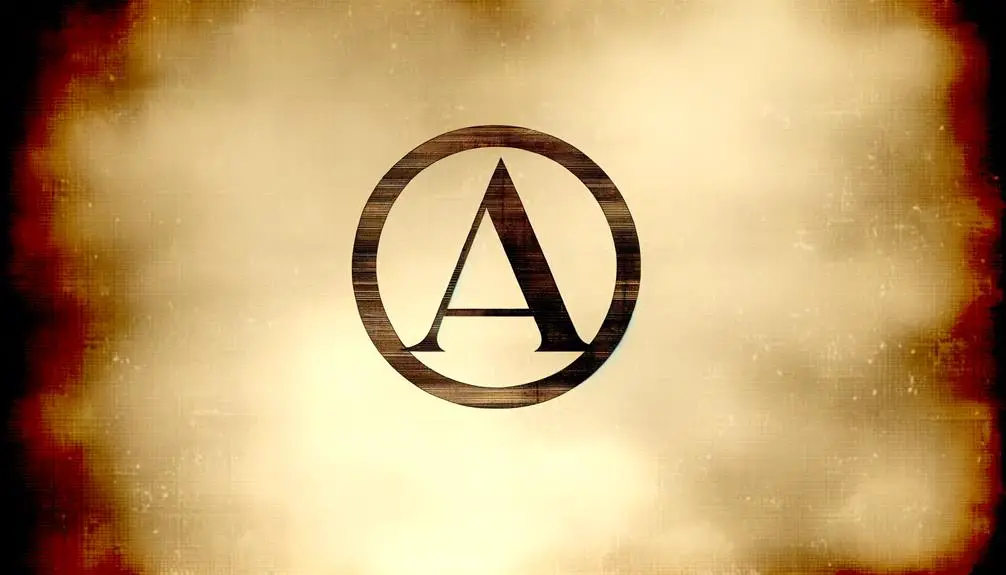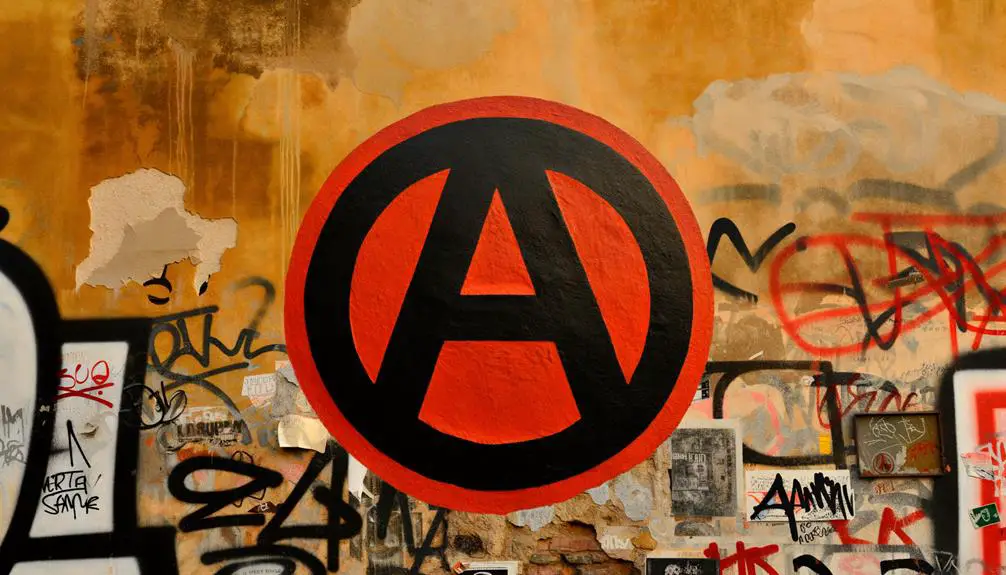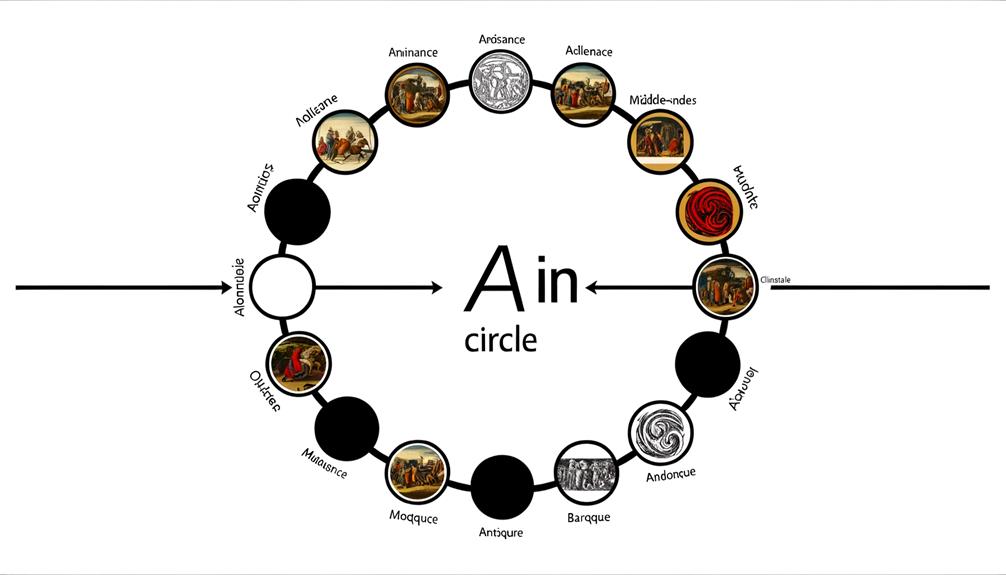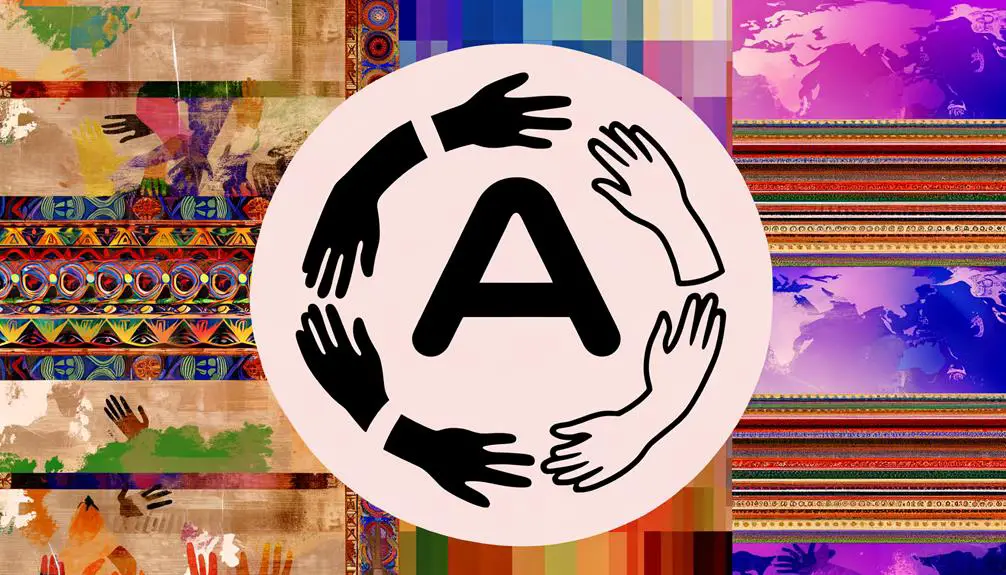What Meaning Does the A in a Circle Symbol Have?
The 'A in a circle' symbol, commonly linked with anarchism, has roots in both ancient and modern importance. Historically, circles symbolized eternity and unity in various cultures such as ancient Egypt and among Greek philosophers like Pythagoras.
Embraced by anarchists in the early 20th century, the emblem embodies ideals of equality, decentralized governance, and resistance to hierarchical systems. Its evolutionary journey mirrors adaptability, aligning with multiple activist causes and cultural movements over decades.
In present-day contexts, it denotes inclusivity, connectivity, and cycles of renewal. To explore further facets of this fascinating symbol, delve into its historical progressions and modern implementations.

Key Takeaways
- The "A in Circle" symbol represents Anarchy, standing for the ideals of equality and resistance against hierarchies.
- The circle boundary signifies inclusivity, interconnectedness, and decentralized governance in anarchist philosophy.
- Adopted in the early 20th century by anarchist movements, it symbolizes unity and mutual aid.
- The symbol is a visual representation of anarchy, reflecting the movement's adaptability and evolving interpretations.
- It is widely recognized across various movements, transcending linguistic and geographical barriers, embodying unity and cyclical infinity.
Origins of the Symbol

Tracing back to ancient civilizations, the circle symbol has been imbued with profound significance and varied interpretations across numerous cultures throughout history.
In ancient Egypt, the circle represented eternity and the cyclical nature of life, often depicted through the ouroboros—a serpent eating its own tail.
Similarly, in Hinduism and Buddhism, the mandala, a circular figure, symbolizes the universe and the path to enlightenment.
The Greek philosopher Pythagoras regarded the circle as the perfect shape, embodying unity and wholeness.
This geometric form also appeared in early astronomical studies, where celestial bodies and their orbits were conceptualized as circular.
Through these diverse applications, the circle has consistently emerged as a symbol of totality, continuity, and the infinite, underscoring its universal resonance.
Anarchism and Its Adoption

The adoption of the circle symbol within anarchism can be traced back to the early 20th century, where it emerged as a powerful emblem representing unity and resistance against hierarchical structures. This period saw an intensification of labor movements and political upheaval, providing fertile ground for the iconography of anarchism to flourish.
The circle encapsulates the letter 'A,' symbolizing 'Anarchy,' and conveys ideals of equality and mutual aid. Its design underscores the theoretical foundation of anarchism: the obliteration of enforced authority and the advocacy for self-managed, stateless societies.
The circular boundary signifies inclusivity and the interconnectedness of individuals within a collective, reinforcing the movement's commitment to egalitarian principles and decentralized governance.
Evolution Over Time

Over the decades, the circle symbol has undergone significant transformations, reflecting its adaptability and enduring resonance within various sociopolitical contexts. Initially adopted by anarchist movements in the late 19th century, the symbol encapsulated ideals of autonomy and resistance against hierarchical structures.
Throughout the 20th century, its visual representation evolved, often incorporating additional elements or stylistic variations to convey nuanced ideological shifts. Theoretical insights suggest that its simplicity and geometric purity allowed for broad reinterpretations, aligning with diverse activist causes.
Historical analysis reveals that each transformation mirrored contemporary struggles, from anti-fascist resistances to modern-day digital activism. Hence, the circle symbol's evolution is not merely aesthetic but profoundly interwoven with the ebb and flow of historical and ideological tides.
Cultural and Social Impact

Building upon its historical evolution, the circle symbol's cultural and social impact is evident in its widespread adoption across various movements and communities, serving as a unifying emblem that transcends linguistic and geographical barriers. Historically, it has been synonymous with ideals of unity, wholeness, and cyclical infinity.
It has been prominently utilized in:
- Anarchism: Representing the ideology of stateless societies.
- Environmentalism: Echoing the interconnectedness of ecosystems.
- Peace Movements: Symbolizing global harmony and cooperation.
- Religious Iconography: Depicting the divine and eternal.
- Social Justice Causes: Emphasizing collective struggle and solidarity.
This broad utilization underscores its versatility and profound resonance, reflecting deep-seated values shared across diverse human experiences.
Through these applications, the symbol has forged a collective identity, nurturing a sense of belonging and purpose.
Symbol in Modern Context

In contemporary society, the circle symbol continues to evolve, embodying a plethora of meanings across various fields such as technology, design, and communication, thereby maintaining its relevance and adaptability.
Historically, the circle has represented unity and wholeness. Today, it is omnipresent in digital interfaces, from the power button icon to loading indicators, signifying connectivity and continuous operation.
Theoretically, its simplicity and symmetry make it an ideal choice in design, conveying inclusivity and balance. In communication, the circle often denotes completeness and cycles, aligning with modern notions of sustainability and renewal.
Consequently, the circle's enduring versatility allows it to seamlessly integrate into contemporary contexts, bridging historical significance with modern functionality.
Conclusion
The symbol of the 'A in circle' has traversed a complex historical and cultural journey, akin to a river carving its path through diverse landscapes. Its origins, rooted in anarchism, have evolved over time, reflecting various socio-political movements and ideologies.
The symbol's enduring presence in modern contexts underscores its adaptability and enduring relevance. As a potent emblem, it continues to inspire discourse and action, embodying the principles of autonomy and resistance against oppressive structures.






